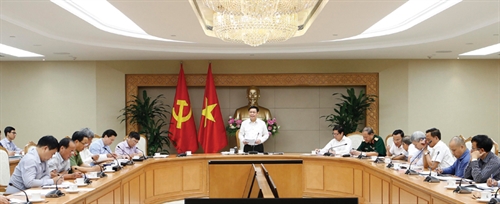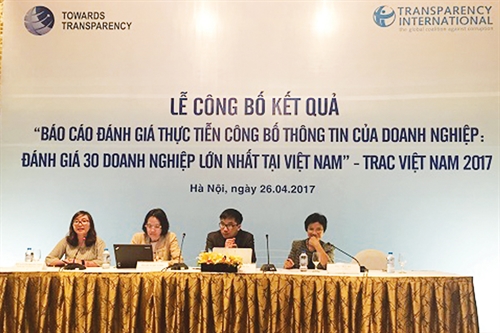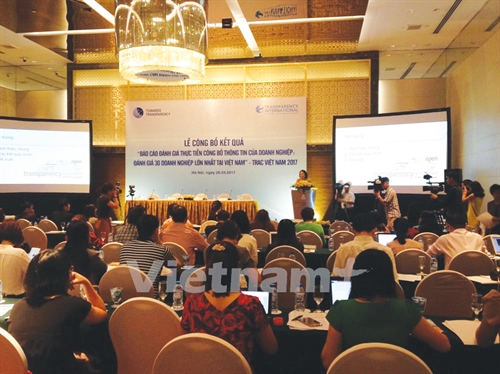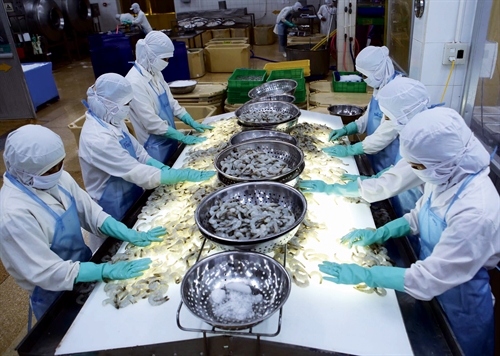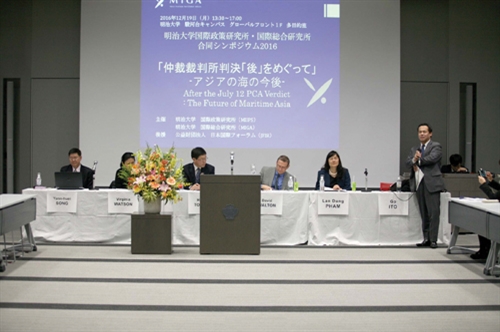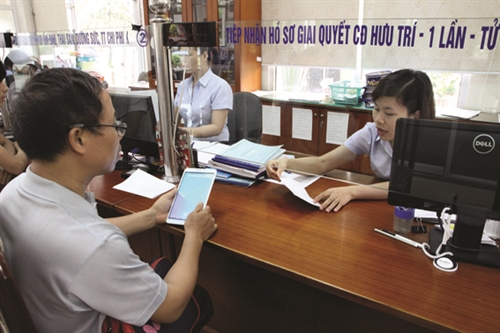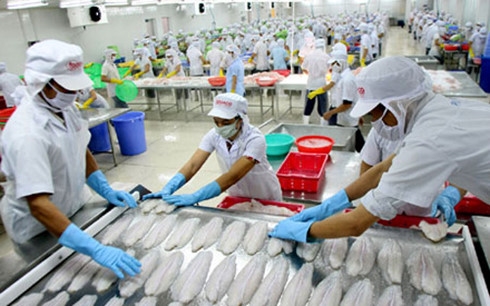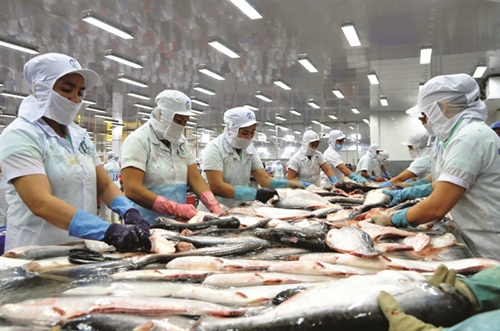This article analyzes two issues: (i) How far AEC has gone in the roadmap to achieve the purpose of capital transactions liberalization and (ii) impacts of the commitments within the AEC regarding capital transaction liberalization on Vietnam’s law on foreign exchange management and on investment activities.
LL.D. Phan Thi Thanh Duong and Nguyen Thi Thuong
Ho Chi Minh City University of Law
Commitments within the AEC on capital transaction liberalization
The ASEAN Economic Community (AEC) is in essence not an economic community in its true sense as it has neither a cohesive organizational structure nor treaties binding on its member states. It is just a goal and a process of future economic integration envisioned by the Southeast Asian countries. Therefore, many objectives of the community, including the objective of capital transaction liberalization, remain vague and in their initial formation. This is demonstrated in the following aspects:
Firstly, AEC does not have any agreement exclusively regulating capital flows among the ASEAN member states. All contents related to liberalization of capital transactions within the ASEAN just stop short at joint plans and declarations the implementation of which depends on the good will, capacity and policy of each member state. They include the Roadmap for Monetary and Financial Integration of ASEAN (RIA-fin) adopted in 2003, and the 2015 and 2025 AEC Blueprints. As these documents are not treaties, they neither impose obligations on member states nor mete out sanctions for non-implementation.
Secondly, the contents of the joint plans, roadmaps and declarations under the AEC have become more and more detailed and clear, creating a precondition for the formulation of more binding documents. At the same time, the issue of liberalization of capital transactions in the region has been considered in a more and more prudent manner against the backdrop of the global economy and each member country’s own economic conditions.
With the 2003 RIA-fin, the ASEAN member states only set the objective of liberalizing capital accounts by step by step removing controls and restrictions on capital movements among them without specific measures and roadmaps. In the 2007 AEC Blueprint, over 700 measures were introduced to achieve the set objectives, including 27 measures to liberalize capital transactions. At the same time, the 2007 AEC Blueprint would be implemented in four stages according to four corresponding roadmaps. To ensure implementation of these measures, the ASEAN countries created an evaluation mechanism called AEC Scorecard to periodically review the implementation by each country.
Under the 2025 AEC Blueprint, taking into account the complicated developments of the regional and global financial markets, the leaders took a more prudent approach in drawing up a roadmap for liberalizing capital transactions. Accordingly, liberalization of capital transactions must ensure the stability of the financial market and the readiness of the national economy of each member state. The blueprint also stresses the role of each member state in the application of safeguards against macroeconomic instability and systematic risks that might arise from the liberalization process[1].
Thirdly, despite the absence of specific mechanisms for implementation, these joint declarations play an important role in directing the actions of the ASEAN member states. The results of assessment of the 2015 AEC Blueprint revealed that the implementation rate of the AEC strategic measures between 2008 and October 2015 reached 92.7 percent[2].
So, these declarations were still implemented with great efforts by the ASEAN member states in order to gradually improve their policies and build their national economies in preparation for the integration toward liberalization of capital transactions.
 |
| Conference entitled “ASEAN at 50: ASEAN Economic Community and the Opportunities for Vietnamese Businesses” held in Hanoi__Photo: Nguyen Dan/VNA |
Besides the blueprints, roadmaps and joint declarations, a number of treaties within the AEC framework have certain contents relating to capital transactions among the ASEAN countries.
The first is the ASEAN Framework Agreement on Services (AFAS) concluded on December 15, 1995. Under the AFAS, the ASEAN countries put forward packages of commitments to open their markets at different levels in each period. In the 9th package of commitments[3], Vietnam offered wider market access to a number of service sectors compared to its WTO commitments. Accordingly, the limitations on capital contributions of ASEAN investors in Vietnam may be 51 percent or 70 percent in some specific sectors, or none.
Secondly, in the ASEAN Comprehensive Investment Agreement (ACIA), the contents relating to the making of capital transactions are more specific. One of the purposes of the ACIA is to build a free and open investment regime among the ASEAN countries in order to achieve the block’s economic integration objective toward investment liberalization among its member states[4]. Under this agreement, Vietnam will liberalize investment rather comprehensively in five major sectors and accompanying services[5]. At the same time, Vietnamese legislation must also facilitate ASEAN investors’ activities in Vietnam, including permitting the movement of capital into and out of the country. Particularly for the transfer of capital for investment activities, Article 13 of ACIA makes the following specific provisions:
- Each member state shall allow all transfers relating to a covered investment to be made freely and without delay into and out of its territory. Such transfers include all contributions to capital, profits, capital gains, payments, compensations for violations, payments arising out of the settlement of disputes and earnings and other remuneration of personnel employed and allowed to work in connection with that covered investment in its territory.
- The national legislation shall determine the currency for transfers relating to a covered investment.
- For transfers showing signs of crime or to protect the public interests or local workers, a member state may prevent or delay a transfer on the principles of non-discrimination and good faith.
- Nothing will prevent a member state from establishing a regime of management of the use of capital sources of ASEAN investors. A member state may maintain or adopt measures to ensure that investments are lawfully constituted and require investors to provide information for statistical purposes and shall keep confidential such information from any disclosure that would harm the investors (Article 20 of the ACIA).
- Each member state may prevent transfers to protect the balance of payments under Article 16 of the ACIA and in exceptional circumstances where movements of capital cause or threaten to cause serious economic or financial disturbance in the member state concerned when satisfying specific conditions for application (Clauses 4 and 5, Article 13 of the ACIA).
The Agreement grants great autonomy to the member states in establishing their own mechanisms to control capital flows. Moreover, the description of exceptional cases in the ACIA is unclear, leading to the flexible, or even arbitrary, application by its member states.
The ACIA prioritizes the national interests over the objective of liberalizing capital flows. A member state may obstruct the movement of capital for the sake of public interests or the national balance of payments.
Article 3 of the ACIA states that this agreement only applies to measures adopted or maintained by a member state relating to investors of another member state and investments in its territory, of investors of another member state. Therefore, it does not apply to measures taken by a member state to offshore investments from such member state.
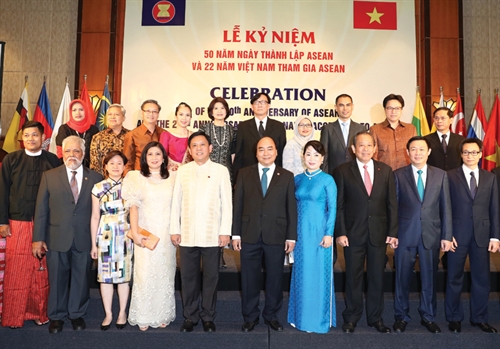 |
| Prime Minister Nguyen Xuan Phuc with delegates at the Conference commemorating the 50th founding anniversary of ASEAN__Photo: Thong Nhat/VNA |
Impacts of the commitments within ASEAN on capital transactions on Vietnam’s law on foreign exchange management and investors’ investment activities
Vietnam’s policies in the process of liberalizing capital transactions
Since 2001, Vietnam has adopted a policy to facilitate the development of the foreign-invested economic sector and spared no effort to improve its economic and legal environment to lure foreign investment.
According to the Resolution of the 12th National Party Congress held in early 2016, one of the central economic tasks in the coming years is: “Our country will fully implement the commitments in the ASEAN community and WTO, participate in new-generation free trade agreements and integrate into the world much more widely and deeply than the previous period.”
The recognition of a multi-sector economy and the policy to facilitate investment and protect lawful assets of investors are also expressly articulated in Article 51 of the 2013 Constitution.
However, prime ministerial Decision 1590/QD-TTg approving the Scheme on orientations for the roadmap of liberalization of capital transactions issued on August 11, 2016, states that Vietnam’s orientations for liberalizing capital transactions are not bound by the requirement of international commitments Vietnam has acceded to because these commitments always permit member states to employ legitimate safeguards to cope with the macroeconomic imbalance and arising risks. Vietnam may on its own initiative set down orientations for liberalizing capital transactions on the basis of: (i) the inevitable integration trend of international investment activities; (ii) the compatibility with the readiness of the national economy, level of development and openness of the financial system; and (iii) the suitability to Vietnam’s management capacity and competitiveness[6].
So, Vietnam has adopted a prudent approach in handling capital transactions on the basis of prioritizing the stability of the financial sector and the readiness of the national economy.
Impacts of the commitments on liberalizing capital transactions within the ASEAN on Vietnam’s law on foreign exchange management
First, with regard to the commitments stated in the ASEAN blueprints and declarations, although there is no mechanism for their compulsory implementation, Vietnam is striving to achieve the general objectives of the AEC. For the AEC blueprints, Vietnam has been ranked as among the group of countries with the highest implementation results from 85 percent to 95 percent during 2008-15. At the same time, its national legislation concerning capital transactions has been increasingly improved. The Ordinance on Foreign Exchange Management passed in 2005 and its amendments in 2013 have effectively dealt with relations involving capital transactions. Besides, numerous legal documents guiding the foreign exchange management of capital transactions have been issued, such as Decree 70/2014/ND-CP detailing the 2005 Ordinance on Foreign Exchange Management, Circular 19/2014/TT-NHNN guiding in detail direct investment activities, Circular 05/2014/TT-NHNN on indirect investment, and Decree 219/2013/ND-CP and Circular 25/2014/TT-NHNN on the borrowing of foreign loans and repayment of foreign debts, to name but a few.
Secondly, for the commitments on market access under ACIA and AFAS to which Vietnam is a contracting party, only ACIA has specific provisions establishing the obligation of the member states to regulate capital transactions. As per the ACIA’s provisions, capital transactions can be divided into two groups: (i) capital transactions which the member states are obliged to permit to move into and out of its territory freely and without delay (Article 13) and (ii) capital transactions falling under the jurisdiction of the member states.
For group (i), some capital transfers are listed by ACIA as those for investment activities but Vietnam’s law on foreign exchange management categorizes them as payments and transfers for current account transactions, including payments and transfers related to commercial credits and short-term bank loans; payments and transfers related to incomes from direct and indirect investments; transfers when obtaining permission for reduction of direct investment capital; and payments of interests and installment repayments of principals of foreign loans.
Article 6 of the 2005 Ordinance on Foreign Exchange Management (amended in 2013) affirms all payments and transfers for current account transactions between residents and non-residents may be made freely. So, all transactions which are in nature capital transactions but listed as current payments and transfers above may be made freely. These transactions correspond to transfers related to profits, payment of loans and incomes of investors specified in Clauses b, d and g, Article 13 of the ACIA.
Besides, the Ordinance’s provisions concerning capital transactions and relevant legal documents all affirm that investors may transfer capital for investment activities and lawful incomes from investment activities abroad or back to Vietnam[7]. These lawful incomes may include other transfers specified in Article 13 of the ACIA, such as proceeds from the sale or liquidation of investments, compensations, and payments arising out of the settlement of disputes. So, Vietnam’s law on foreign exchange management is conformable with Article 13 of the ACIA in permitting investors to make transfers freely.
For group (ii), the Ordinance on Foreign Exchange Management allows capital transactions to be made freely within the committed scope and investors to transfer capital for investment activities. However, investors are required to comply with certain procedures or methods. For each form of capital transaction, the State Bank of Vietnam (SBV) would issue specific regulations guiding the method of transfer to be complied with by investors. For example, all transfers must be made via accounts opened at licensed credit institutions. The law also prescribes the obligation to prove the lawful origin of capital sources. Transfers must be made in a certain currency permitted by the law. For some certain transactions, the transfer of foreign currencies into and out of Vietnam must be registered, etc. These regulations are totally compatible with specific provisions of the ACIA.
Impacts of the commitments on capital transactions within ASEAN and Vietnam’s law on foreign exchange management on investors’ investment activities
Depending on the capital flow into or out of Vietnam, Vietnam’s law on foreign exchange management establishes specific regimes clearly reflecting Vietnam’s policies on capital transaction liberalization.
For capital flows into Vietnam
At present, although the investment law no longer regulates direct and indirect investments separately, the law on foreign exchange management still deals with capital transactions based on the directness and indirectness of investment activities. Therefore, the policies applicable to these two capital flows are totally different.
Like other developing countries which prioritize the attraction of foreign direct investment (FDI) for economic development, Vietnam welcomes the movement of FDI capital into the country. The State manages these capital flows through accounts of FDI capital in a foreign currency or Vietnam dong opened by FDI enterprises at only one licensed credit institution. The law does not restrict the number and timing of capital transfers provided that they are made for revenues and expenditures enumerated by the law. Capital transferors are obliged to prove the purposes of transfers with records and documents according to requirements of each credit institution.
For foreign indirect investment (FII) flows into Vietnam, since they are not as safe and stable as FDI, the law regulates these flows in a different way. Each foreign investor may open a sole FII capital account at a single licensed credit institution for indirect investment activities. This account may be opened in Vietnam dong only to ensure that all FII transactions in the territory of Vietnam are made in the local currency. This provision also helps restrict the reversal of this sensitive capital flow.
The above provisions fully conform with those of the ACIA as they permit investors to transfer investment capital in accordance with the national law on the currency and method of transfer. On the other hand, the national law may require the provision of information and proving of the sources of capital amounts.
Regarding loans borrowed from and debts paid to foreign countries, although they play an important role in feeding capital for the economy, they pose certain risks affecting the safety of foreign debts of a country. Therefore, Vietnam only permits enterprises to borrow foreign loans within annual limits approved by the Prime Minister. The borrowing of foreign loans and repayment of foreign debts must be registered with the SBV. In addition, all transfers related to the borrowing of foreign loans and repayment of foreign debts must be made at accounts opened at licensed credit institutions[8]. Although Article 13 of the ACIA obliges the member state to permit payments for obligations arising from contracts (including borrowing contracts) to be made freely, Vietnam has applied Clause 4.b, Article 13, and Article 14, of the ACIA to impose the above restrictions to protect its balance of payments and financial security.
For capital flows out of Vietnam
Given its limited foreign currency sources, Vietnam has tried its best to build up its foreign exchange reserves and increase domestic investments. Therefore, its foreign exchange management law imposes extremely strict restrictions on the movement of capital out of Vietnam.
For offshore direct investment capital, investors must, besides satisfying the conditions for making offshore investment set by the investment law, register the transfer of offshore investment capital with the SBV and may only transfer the capital according to the registered roadmap. Transfers must also be made via a foreign currency account at a licensed credit institution[9].
Particularly for offshore indirect investment activities, only until June 29, 2016, did the SBV issue Circular 10/2016/TT-NHNN guiding offshore indirect investment. Before this date, investors in Vietnam could not carry out such investments. Moreover, this Circular only permits few entities to directly carry out these activities[10], while other economic entities may do so only through entrusting fund management companies or commercial banks. Individuals are totally prohibited from making offshore indirect investment, except participating in the program on bonus stocks issued overseas.
As regards the grant of loans and recovery of debts overseas, only credit institutions may now grant loans to enterprises with capital contributions of overseas-based Vietnamese enterprises and must register these loans with the SBV. The grant of other loans and recovery of other debts overseas must be permitted by the SBV. In the context that Vietnam does not encourage the movement of foreign currencies out of the country, the grant of loans and recovery of debts overseas are generally not encouraged and accepted.
So, although having gone far on the path of economic integration, the ASEAN member states have a lot to do to achieve the objective of liberalizing capital accounts within the block. In this regard, ASEAN just stops short at general objectives and has not yet come up with more binding treaties. As a result, the member states still enjoy great autonomy in opening their capital markets. At the same time, in the relation with the investment law, the law on management of capital transactions plays a very important role. This is an essential institution that every member state must design if it wishes to implement investment agreements within ASEAN and its investment law.-
